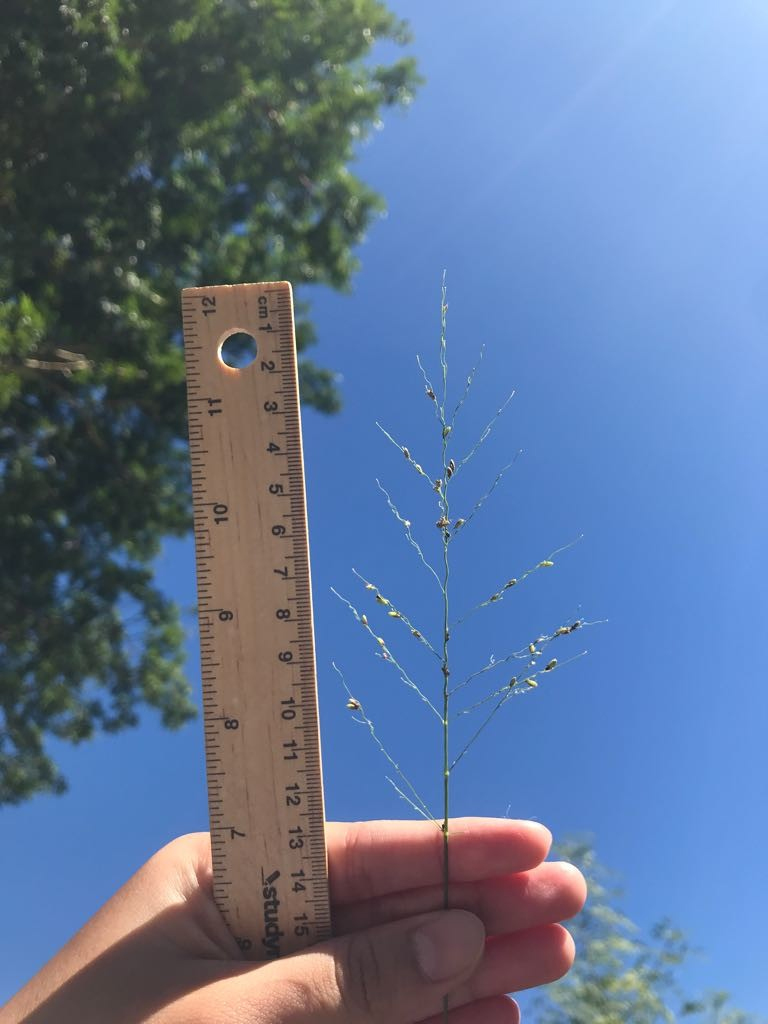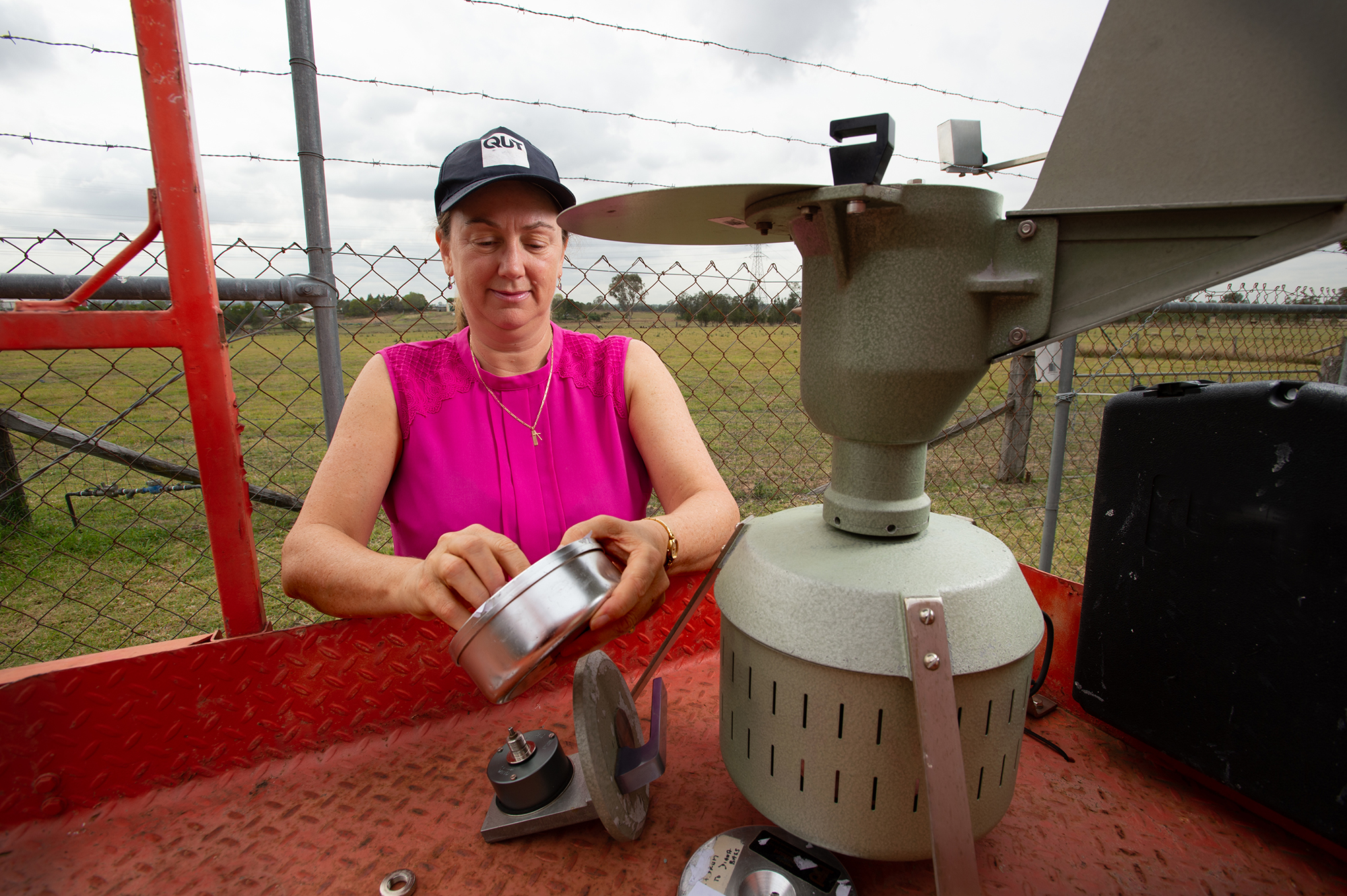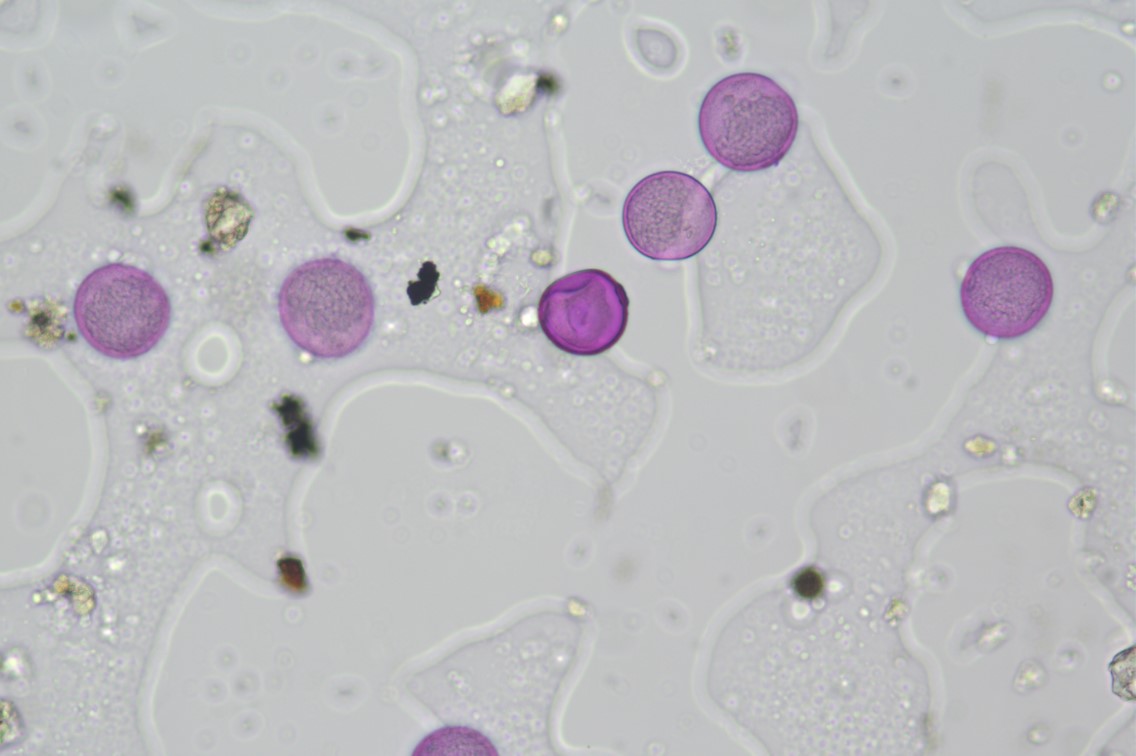
Agricultural students at Brisbane’s Corinda State High School have become citizen scientists while at home, providing useful data to QUT researchers on local distribution of flowering grass species which produce allergy-triggering pollens.
The school and QUT’s Allergy Research Group have an ongoing connection, as school agricultural farm facilities adjoin where the research group’s pollen monitoring trap is set up at Rocklea. Samples are collected from the trap daily and analysed to provide the Brisbane Pollen forecast.
“I had been talking with QUT’s Dr Beth Addison-Smith for a while,” said Corinda agriculture coordinator Chris Butcher, “about doing a student learning and engagement project with the researchers as part of our agricultural technology program.
“Grasses are agricultural fodder crops, and we know from the researchers that movement of cattle on the school farm and other activities can be reflected in pollen samples collected in the trap.
“When the COVID-19 restrictions were put in place we thought ‘now is the time’ to get this project going, as a way to keep students engaged and give them some practical, hands-on things to do while they were learning at home because they weren’t able to do any activities on the farm.”
The students first went through a background learning module the research team prepared on pollens and types of flowering grasses. They were tasked to take photos of grasses and any flowers on grasses they found in their back yards and local areas, upload the images to a data collection platform, describe them, and try to identify them from the learning resources. The platform maps the areas from which the students collected their samples.

“About 60 students doing agricultural studies from years 7 to 12 have been involved,” Mr Butcher said.
“The QUT researchers provided high-quality microscopic images and videos of pollens in the learning materials, and I filmed myself doing the activity of taking photos and uploading them to the platform to show them how to do it.
“Some students had some technical issues but it’s been a good platform to work with and everyone can see what’s been uploaded.
“It’s allowed them to stay connected. They can look at the map of where data has been collected and realise that, although we’re not all in the same physical space, we’re still a class working together and perhaps then feel a little less isolated. That personal wellbeing is an important benefit of the project. It’s also an activity we can continue to do when classroom learning resumes for all students at school.”
Head of the QUT Allergy Research Group, Professor Janet Davies, from QUT’s Faculty of Health School of Biomedical Sciences and Institute of Health and Biomedical Innovation, said the team hoped to roll out the citizen science grass-mappers project to more schools.
“It’s been wonderful collaboration and it’s helped us to refine the project and learning modules and activities,” she said.
“It’s given the students a unique learning experience too, and exposure to real world science and research about pollen, allergies, mapping grass species and ecology.

“Grass pollens are the major outdoor allergen trigger for hayfever, which about 19 per cent of Australians suffer from, yet the distribution of various grass species around Brisbane and their flowering behaviour is not well documented.
“Collecting this information about what grasses there are in local environments with the help of citizen scientists can help improve pollen forecasting and raise awareness of allergy triggers and diagnosis and management of pollen allergies.
“For the agricultural students is also gives them knowledge of agriculture fodder crops, natural biological cycles of grassland greening, flowering production and pollen release.”
As well as Professor Janet Davies and Dr Addison-Smith, the multidisciplinary QUT Allergy Research Group involved in developing the project includes plant biologist Ms Shanice Van Haeften, environmental chemist Dr Andelija Milic and grasslands ecologist Professor Jennifer Firn. The learning resources were also developed in collaboration with AusPollen, the partnership headed by Professor Davies which provides Australia-wide standardised information on pollen concentrations and forecasts.

QUT Media contacts: Karen Milliner, 07 3138 1841 or k.milliner@qut.edu.au
After hours: Rose Trapnell, 0407 585 901 or media@qut.edu.au


